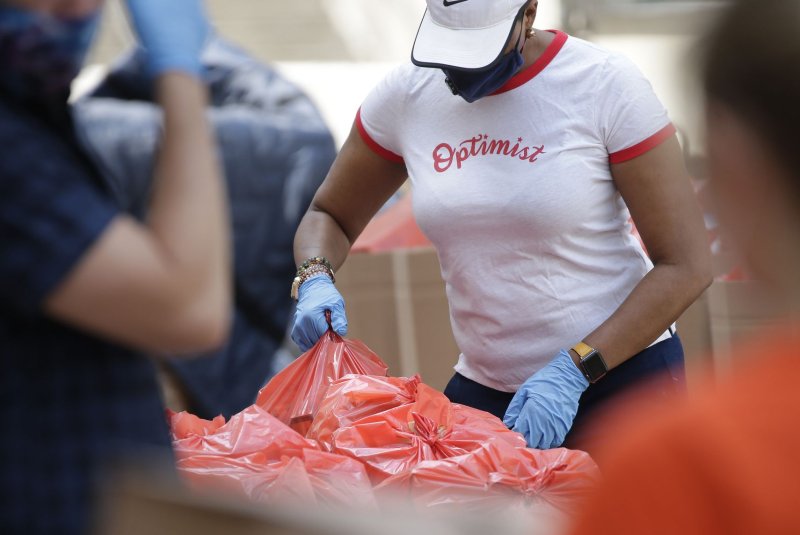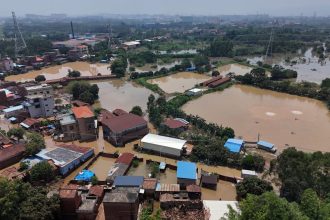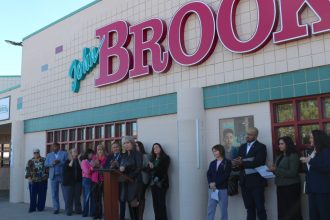Oct. 30 (UPI) — More than 40 million people may be without access to adequate food beginning Saturday if the government shutdown continues.
Full Supplemental Nutrition Assistance Program benefits will not go out to recipients as they usually would beginning on the first of the month, unless the government makes contingency funding available through congressional action.
It has not been announced whether or not this will happen, but Agriculture Secretary Brooke Rollins says there are not enough funds to provide benefits.
The U.S. Department of Agriculture shared a letter with UPI stating that contingency funds are “not legally available to cover regular benefits.” It explains that contingency funds could only be used for purposes like the Disaster SNAP program, providing food to disaster areas.
However, during President Donald Trump’s first term the USDA used reserve funds to provide funding for regular SNAP benefits during the government shutdown in February 2019.
Agriculture Secretary Brooke Rollins says there are not enough funds to provide full Supplemental Nutrition Assistance Program benefits. File Photo by Samuel Corum/UPI
The USDA notified the state agencies that administer SNAP benefits earlier this month, directing them to delay sending out funds until further notice.
On Tuesday, 25 states filed a lawsuit against the federal government to force it to release funding for SNAP. According to the lawsuit, SNAP benefits have never been delayed since the program began.
A group of 23 attorneys general responded to Rollins and the department in a letter, asking for clarification on its contingency plan.
The SNAP program has an estimated $6 billion in funds held in reserve in the case of lapses such as this.
“USDA’s Oct. 10 letter is in considerable tension with Congress’ directives,” the letter from 23 attorneys general to the USDA and Rollins said. “Because many states must send the necessary files to their vendors several days before the start of the month, complying with the Oct. 10 letter has already guaranteed that November benefits will be delayed for many SNAP recipients that live in states with deadlines that have already passed.”
One in eight Americans receive SNAP benefits.
Sharon Parrott, president of the Center on Budget and Policy Priorities and former U.S. Office of Management and Budget, said in a statement that the Trump administration may also use its authority to supplement contingency funding for SNAP.
“The administration itself admits these reserves are available for use,” Parrott said in a statement. “It could have and should have taken steps weeks ago to be ready to use these funds. I know from experience that the federal government has the authority and the tools it needs during a shutdown to get these SNAP funds to families. Even at this late date, professionals at the Department of Agriculture and in states can make this happen.”
Local food banks and pantries across the country are already seeing increases in need due to layoffs and government workers being furloughed during the shutdown. As the winter months and the holiday season approach, food insecurity increases and more people look to food banks for assistance.
Cyndi Kirkhart, CEO of Facing Hunger Foodbank in Huntington, W.V., told UPI that about 20,000 more people are using her organization’s services. Facing Hunger Foodbank serves 17 counties, including 12 in West Virginia’s Southern Coal Fields and counties in Kentucky and Ohio.
“We started seeing the increases a couple weeks ago, frankly,” Kirkhart said. “A lot of our communities are very rural and remote so transportation and food access has always been a challenge. Right now with the very high demand it’s exponentially so.”
Calls to the food bank have increased by about 50%, according to Kirkhart. Its service area is marked with a significant elderly population, as well as people who work for the Coast Guard.
Many new visitors are facing food insecurity for the first time.
“There are lots of new faces,” Kirkhart said. “On Friday, we had 25 families show up at the food bank for emergency food boxes when over a month we may see 50 total.”
Last week, West Virginia Gov. Patrick Morrisey approved $1.1 million in emergency funding to West Virginia food banks in preparation for a disruption in SNAP benefits.
Kirkhart said her food bank could still use more volunteers to box and deliver food and more donations. Proteins like peanut butter, canned meat, soups with meat and meal extenders are the food items that are most needed.
“I would encourage anyone across the country to really look around for your local food bank and your local pantry. Check on your neighbors and folks that have transportation difficulties,” Kirkhart said. “Who’s at fault doesn’t matter when everyone is suffering. We’re all uncertain and the more we can do with one another, for one another, the better off we are.”
The Los Angeles Regional Food Bank serves about 1.1 million people per month in Los Angeles County, the most populated county in the United States. According to Victoria Lasavath, marketing and communications manager, the food bank works with six nonprofit organizations across the county to distribute food.
About one in five Californians face food insecurity. According to the California Association of Food Banks.
The California National Guard is lending help to food banks like the Los Angeles Regional Food Bank by preparing food kits. Gov. Gavin Newsom has approved $80 million in state funds to aid food banks.
Lasavath said the Los Angeles Regional Food Bank has received support through the Los Angeles County wildfires and COVID-19 pandemic. It will look to the support of its community again.
“This next patch of uncertainty, I do feel confident given the support we’ve seen — our community is very engaged,” Lasavath said. “It’s inspiring. It’s hard to predict also depending on how long the shutdown lasts. From what I’ve seen firsthand a lot of people do want to help.”
People in the Los Angeles County area can find resources near them by searching their zip code on the Los Angeles Regional Food Bank website. Other organizations across the country have similar features to find and connect with resources.
“Whether this is the very first time you are experiencing food insecurity or maybe you’ve experienced it before or know somebody, we want to empower anybody in our community to seek out the help and we want to take away any stigma or any shame in reaching out for any resources that are here for this reason and beyond,” Lasavath said. “The food bank and our partners, we are committed to providing food assistance during this shutdown, during the holidays, but also all year. We want people to feel comfortable to seek out the food that we all need.”
The Oregon Food Bank and more than 200 other organizations in the Beaver State have joined the call for the USDA to use contingency funds to deliver SNAP benefits.
Sammi Teo, public policy advocate for Oregon Food Bank, said in a statement that more than 750,000 Oregonians rely on SNAP.
“A delay in SNAP benefits will have an immediate and devastating impact on our communities,” Teo said. “Hunger is a policy choice. We can choose to end it by protecting programs like SNAP. Without timely action, hunger will deepen and more Oregonians will go without meals.”









